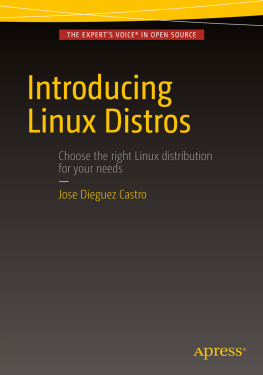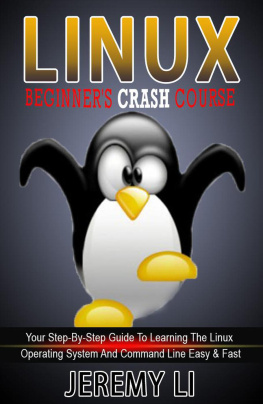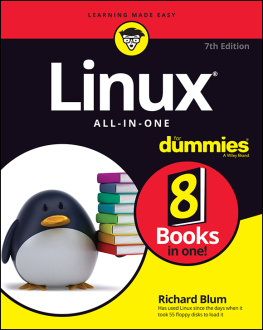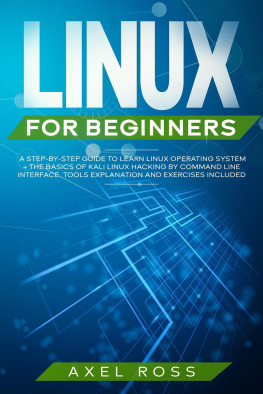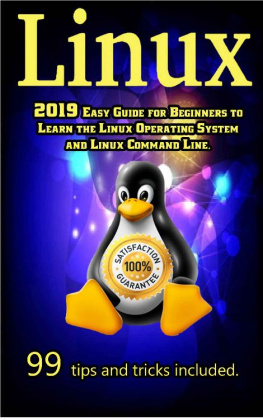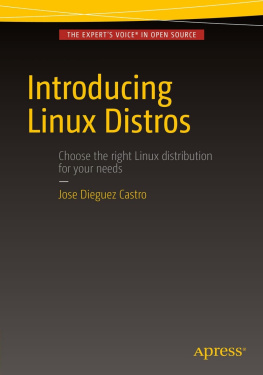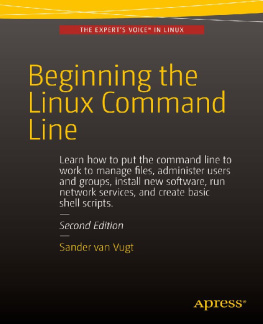Linux Distros
In the first part of this book, you get a good perspective on Linux distros and what you must consider when comparing the various distros in order to select the right one for you. You also learn about the origins of the Linux distros and the reasons why there are so many and how they are related.
In the first chapter, you learn about the nature of a Linux distribution. In order to do that, you need to understand what Linux is, and the best way to accomplish this is to learn about its origins and a bit of its development history. Basically, I present the minimal amount of information necessary for you to put Linux and its distros in context.
The second chapter is a compilation of points you must consider in order to compare the performance and features of two or more Linux distros. Some of those points cover subjective issues, such as personal preference of one aesthetic over another, or if you like one desktop environment in particular. Nonetheless, you will have a checklist to use as starting point.
The third and final chapter in this part of the book covers the family tree of Linux distributions. This information is provided so that you know how they are related to each another (at least the more relevant distributions) and to get an idea of why there are so many of them and why one particular distro has so many derivatives.
1. Deconstructing a Linux Distro
Electronic supplementary material
The online version of this chapter (doi: 10.1007/978-1-4842-1392-6_1 ) contains supplementary material, which is available to authorized users.
One of the first things that surprises new Linux users who come from other operating systems such as Windows or Mac OS is that a single entity called Linux OS does not, in fact, exist. Linux is only a kernel, not an OS, and what people generally perceive as Linux OS is actually a Linux distribution, and more precisely a GNU/Linux distribution. The Linux distribution concept is very popular, and it is commonly known as a Linux distro . This is the term that I use throughout the rest of the book. Dont be put off by all of these terms: I cover them in detail in this chapter.
After learning that what you thought was Linux is actually a Linux distro, heres another surprise: there is not just one unique Linux distro. Rather there are many, perhaps a few hundred, Linux distros available. Thus the task of choosing the right Linux distro for your needs can easily become an overwhelming task. Nevertheless, this first step can be critical, and there are several approaches for accomplishing this this:
Note
There are more than 700 Linux distros available at the time of this writing, but only about 300 are currently actively developed and supported.
One way to choose a Linux distro is to follow the advice of a colleague, the recommendation of a professional, a review that you find on the Internet, a random choice, or because it is the only version you know about at the moment. If the experience is pleasant, you may wind up using that distro for a long time.
Sometimes the experience of choosing a Linux distro is not pleasant at all. The problem could be the installation process, the desktop environment, the terminal, or the user documentation. Any of these issues might make a particular distro not right for you. From there, the process could follow one of these common paths :
You become angry and disappointed, so you give up on using this OS, possibly forever, or at least for a long time. You may take to the Internet to criticize the Linux distro that you tried, and you may warn your colleagues against it. Unfortunately, you might have turned into a long-term Linux user if you had only chosen the right distro at the start.
Lets say that you decide to try another Linux distro. After a few tests, you find the one that seems to address your expectations. You turn into a long-term, happy user of that particular distro, and you do not hesitate to test other ones.
Alternatively, you try several distros, maybe even a lot of them, but you never find the one with which you feel comfortable. The problem could be that you havent defined your needs or wants specifically enough, and so you havent discovered which distros can cover these needs and in which manner. You may end up as a long-term, not-so-happy Linux user, or you may switch to another OS completely.
Finally, you may be someone who thoroughly enjoys testing new Linux distros. You may use one Linux distro on a regular basis, but test new ones on a different machine or VM, or you may switch Linux distros every few months or every few years. You are probably a long-term Linux user.
As you can see, the decision-making process for choosing a Linux distro is very important. The Linux experience can be radically different from one distro to another, and finding the right one for you may be hard. This book aims to help you in process of finding the Linux distro that best fits your needs. A lot of trouble, disappointment, annoyance, and unpleasantness can be avoided if you use objective selection criteria. Obviously, previous experience, expectations, and an open mind can help with the adoption of a Linux distro. The goal of this book is to help you make your ultimate decision, or at least take your first steps in selecting a Linux distro, and then make working with Linux OS a pleasant experience.
Note
One of the easiest ways to choose a Linux distro is to use a service like http://distrowatch.com . The site provides rankings and a brief description of the most common distros. The differences among distros are very important. By the way, what distro do I use? I am writing this book using a virtual machine to run Windows 8 and Microsoft Word, but the underlying foundation is an Arch Linux installation managing it all.
Linux Distro
What exactly is a Linux distro? A Linux distro is a set of components that are required to achieve a working Linux system, and the processes needed to install these components to achieve a running system. Today, a Linux distro includes the Linux kernel itself (different versions of the kernel may be integrated into the same distro for different hardware architectures, for example), the omnipresent GNU tools (more about this later), a lot of small tools that are needed to provide different services, probably a windowing system, a desktop environment, and finally a package management system with a number of software packages that can be installed by default or according to user preferences. Even when the entire installation process can be completed (more or less) through the automated distro installation process, as opposed to other operating systems, the Linux OS installation is highly customizable. A particularly unique aspect of a Linux distro is the user documentation that is provided. Even when the documentation for the numerous individual packages that comprise a distribution is delivered, many distros provide nearly complete documentation about the distribution itself, primarily relating to the installation process or how to contribute personally to the distribution.
To choose a Linux distro, you must first learn exactly why they exist and why there are so many of them. To achieve this goal, we must first dig into the origins and history of Linux itself and the circumstances surrounding its creation.

